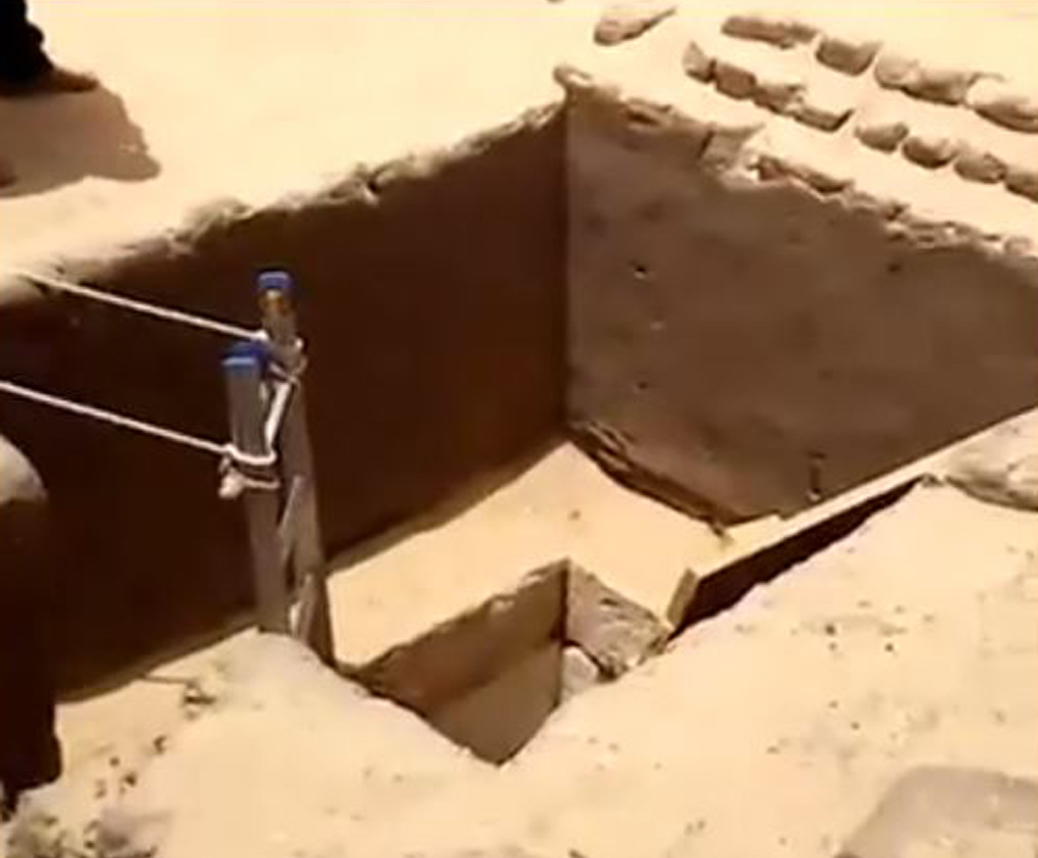Underground Catacomb Filled with Mummies Discovered in Egypt

Archaeologists have discovered an underground catacomb containing numerous mummy-filled corridors at an ancient cemetery at the site of Tuna el-Gebel in Egypt.
The catacomb can be entered only through a narrow shaft which leads underground. At the bottom of the shaft, archaeologists found that "there are many corridors and many burial places for mummies," said Mohamed Salah bn Mohamed Ahmed El-Kholy, a professor at Cairo University, at a press conference held this morning (May 13) at Tuna el-Gebel. Archaeologists with Cairo University have been excavating at Tuna el-Gebel for about 80 years, El-Kholy said.
Excavations are ongoing and, in his English language comments, El-Kholy didn't provide an estimate for the number of mummies in the newly discovered catacomb. Images of some of the artifacts were broadcast on the Egyptian TV station اليومالسابع(a name that translates to "Video Youm7"). An online video posted by the TV station shows ancient lamps, coins and colorfully decorated coffin remains from the catacomb. Additionally, archaeologists found numerous long, slender pieces of pottery that could have held liquids, according to video shown on the TV station. The largest examples appear to be about 3 feet (0.9 meters) long. [See Photos of Mummies Discovered at Another Ancient Egyptian Cemetery]
El-Kholy did not say when the mummies date to in his English language remarks. However, the presence of coins, which in Egypt started appearing around 2,500 years ago, means that at least some of the mummies must date to after this time, possibly after Egypt was conquered by Alexander the Greator even later, when the Roman Empire ruled Egypt.
Currently, officials are leading reporters, one by one, down into the catacomb, through the narrow shaft. The shaft is only large enough for one person at a time to climb down, making it hard for reporters to bring TV cameras and photo equipment into the catacomb. Dozens of reporters could be seen lining up for an opportunity to venture underground.
Original article on Live Science.
Sign up for the Live Science daily newsletter now
Get the world’s most fascinating discoveries delivered straight to your inbox.

Owen Jarus is a regular contributor to Live Science who writes about archaeology and humans' past. He has also written for The Independent (UK), The Canadian Press (CP) and The Associated Press (AP), among others. Owen has a bachelor of arts degree from the University of Toronto and a journalism degree from Ryerson University.









